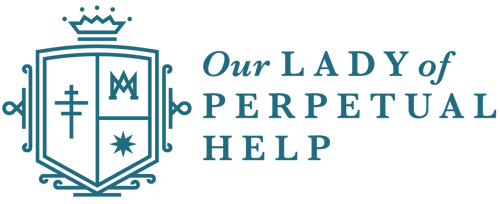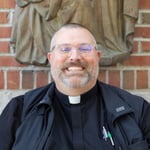Pastor's Corner | The Twentieth Sunday in Ordinary Time
At the end of the 2023-2024 school year, the Director of Sacred Music for the Diocese of Columbus wrote an article on Sacred Music and I would like to share that with all of you. I will share it in two parts. It helps us understand the vision of Sacred Music held by the Church, which it has always held and will continue to hold. And it also begins to lay out what Bishop Fernandes desires for the Church of the Diocese of Columbus. I know we all grew up with a very different understanding of church music. In this article Dr. Fitzgerald helps us understand the Church documents from antiquity and also the documents of Vatican II and beyond.
What is Sacred Music?
Music of the Church as defined by official documents.
Dr. Richard K. Fitzgerald, Cathedral Director of Music and Organist
Sacred Music is not an end in itself; rather, it’s a means to an end which is to make the liturgy more beautiful, to connote the trans temporal nature of the liturgy, and to give Glory to God and to aid in the sanctification of souls.
Overview:
1. How is Sacred Music defined and by what authority?
a. Why should we care? Why is this important?
b. What are the general characteristics of sacred music? Sacred music in the abstract.
2. What are the specific characteristics of sacred music? Sacred music in practice.
a. Gregorian chant
b. polyphony
c. the pipe organ
d. hymnody
3. How can music according to Church teachings be implemented?
By what authority is Sacred Music defined?
Official documents on sacred music
Just as the Church’s official teachings on theological, sacramental, and liturgical subjects (among many others), the Church defines a paradigm of sacred music rather explicitly.
What are the major sources of Church teachings on music?
Musicam Sacram (1967), an instruction on music and the liturgy written by the Sacred Congregation of Rites
Sacrosanctum Concilium (1963), this is the Constitution on the Sacred Liturgy
Tra le sollecitudini (1903; Italian for “among the concerns”), written by Saint Pius X; this is his Motu Proprio on Sacred Music
The General Instruction on the Roman Missal (GIRM)
Chirograph on Sacred Music by Saint John Paul II
Honorable mention: Sing to the Lord: Music in Divine Worship
Although not an official Church document on sacred music, it provides helpful commentary by members of the United States Conference of Catholic Bishops
Each document is available free, online, and from Dr. Fitzgerald
What is Sacred Music?
What do the documents say about sacred music? How do they define sacred music?
Musicam Sacram defines sacred music as “that which, being created for the celebration of divine worship, is endowed with a certain holy sincerity of form.”
Sacrosanctum Concilium says “...sacred music surpasses merely religious music when it is joined to the liturgical rite to become ‘a necessary and integral part of the solemn liturgy,’ whose purpose is ‘the glory of God and the sanctification of the faithful’ ”.
In 1989, Saint John Paul II said “As a manifestation of the human spirit, music performs a function which is noble, unique, and irreplaceable. When it is truly beautiful and inspired, it speaks to us more than all the other arts of goodness, virtue, peace, and matters holy and divine. Not for nothing has it always been, and will it always be, an essential part of the liturgy.”
Tra le sollecitudini (1903), Saint Pius X defines three characteristics of sacred music: “it must possess holiness and beauty of form: from these two qualities a third will spontaneously arise—universality”
Sacred music is set apart from all other kinds of music
It is set apart for divine worship
It is sacred, it is extraordinary, it is unlike “ordinary” secular music
Church Music Association of America: “It must therefore exclude all that is not suitable for the temple—all that is ordinary, every-day or profane, not only in itself, but also in the manner in which it is performed. The sacred words of the Liturgy call for a sonic vesture that is equally sacred. Sacredness, then, is more than individual piety; it is an objective reality.”
(second) Beauty of Form
1. Concerning beauty, the original Latin (in which the Motu proprio was written) speaks more precisely of bonitate formarum or “excellence of forms.”
This refers to the tendency of sacred music to synthesize diverse ritual elements into a unity, to draw together a succession of liturgical actions into a coherent whole,
For example, sacred music helps to unify all the various parts of the Preparation of the Gifts, or Offertory, the various processions and other movements that take place during the liturgy, and so on.
The term “Excellence of forms” also serves to differentiate those elements, to distinguish the various functions of liturgical chants by revealing their unique character. Each chant of the various Gregorian genres (for example, the Introit, the Gradual, the Alleluia, the Offertory, and so on) presents a masterly adaptation of the text to its specific liturgical purpose.
When considering this, coupled with Gregorian chant’s function of imparting Gospel truths through text, it’s not surprising that the Church has consistently proposed chant as the paradigm of sacred music.
“excellent of forms” also describes sacred music’s ability to serve a range of sacred expressions or human emotions. For example: joy, angst, despair, mourning, rejoicing, etc.
Lastly, “excellence of forms” means that sacred music should simply be excellent
So, out of holiness and “excellence of forms”, a third characteristic of sacred music will spontaneously arise, and that is Universality, according to Pius the 10th.
Provided the first two qualities are in place (holiness and beauty), sacred music becomes supra-national, transcending culture.

